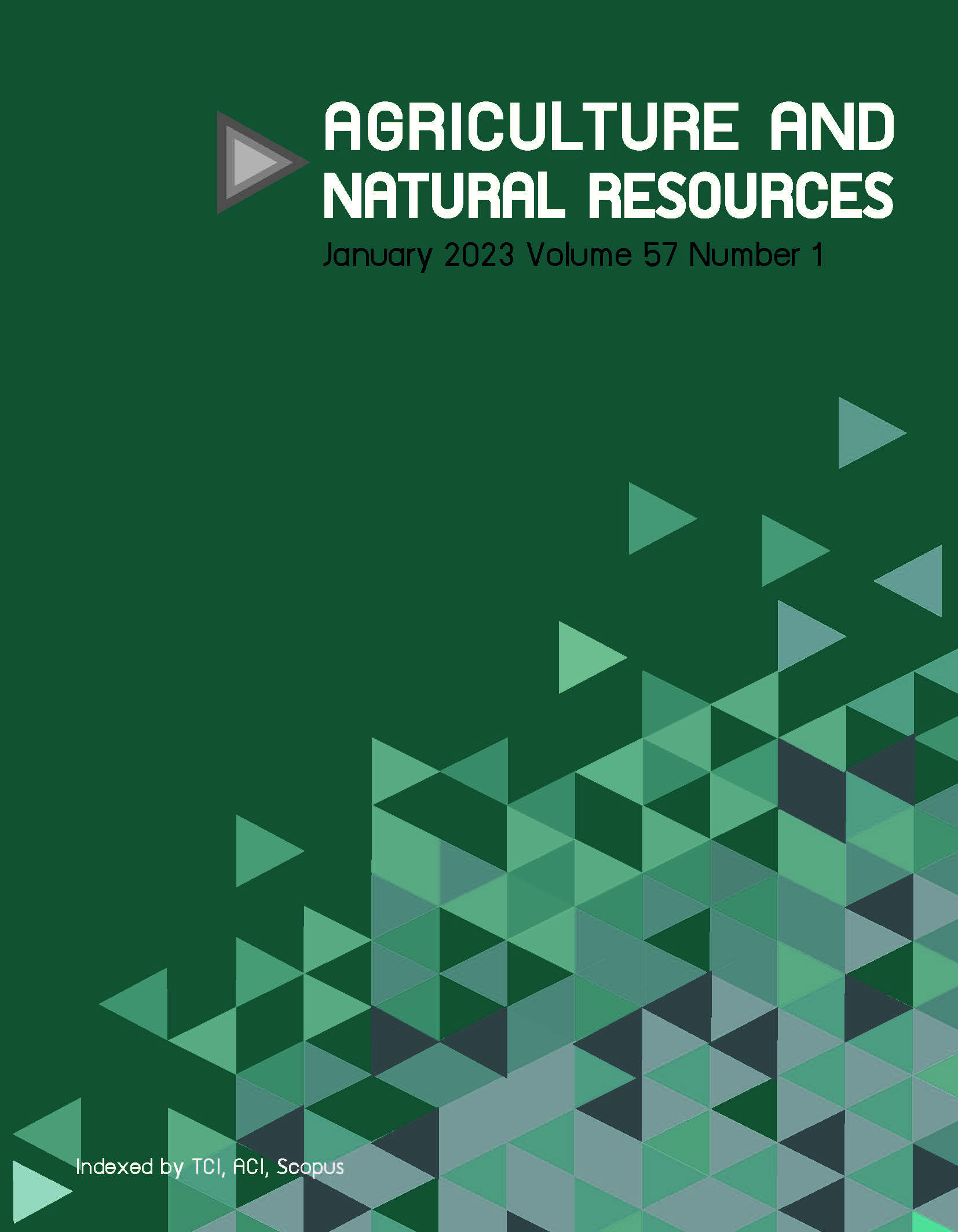Determination of biological safety profile and nutritional composition of cattle small intestinal digesta (“Pia”), a traditional food ingredient in Northeastern Thailand
Keywords:
Food ingredient, Food safety, Nutritional composition, “Pia”Abstract
Importance of the work: Cattle small intestinal digesta (CSID), locally known as “Pia”, has been used as a traditional food ingredient in Northeastern Thailand. However, the information on its biological safety and nutritional value is lacking.
Objectives: To determine the biological safety profile and nutritional composition of CSID.
Materials & Methods: CSID samples from nine individual cattle were collected from a local slaughterhouse in Sakon Nakhon province and divided into duodenum, jejunum and ileum samples. All samples were subjected to microbial analysis, parasite egg determination and nutritional composition analysis.
Results: The microbial loads (total plate count, Escherichia coli, coliform and Staphylococcus aureus) of most samples were within the Thai legal limits and Salmonella spp. and Listeria monocytogenes were not present in 25 g samples. In contrast, 66% of samples were single or double infected with parasite eggs identified as rumen fluke eggs, strongylid eggs and capillaria eggs. The CSID samples on average (± SD) wet weight basis contained 92.74±1.61%, 0.92±0.90%, 1.46±0.42%, 2.24±0.96%, 0.17±0.06% and 3.14±1.76% for moisture, crude fiber, ash, protein, fat and carbohydrate contents, respectively. The CSID samples contained all essential amino acids that accounted for 34.39 mg/g wet weight, of which lysine and leucine were the major essential amino acids. The CSID comprised 7.70 mg/g wet weight, 3.10 mg/g wet weight and 2.00 mg/g wet weight of saturated fatty acids, monounsaturated fatty acids and polyunsaturated fatty acids, respectively.
Main finding: The CSID samples contained substantial amounts of nutrients, illustrating their
nutritional value; however, dishes containing CSID must be thoroughly cooked. This information
will contribute greatly to the safer use and further development of CSID as a traditional food
ingredient.
Downloads
Published
How to Cite
Issue
Section
License
Copyright (c) 2023 Kasetsart Universityonline 2452-316X print 2468-1458/Copyright © 2022. This is an open access article under the CC BY-NC-ND license (http://creativecommons.org/licenses/by-nc-nd/4.0/),
production and hosting by Kasetsart University of Research and Development Institute on behalf of Kasetsart University.







